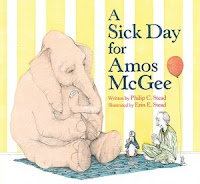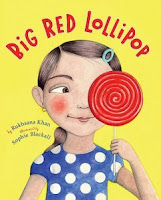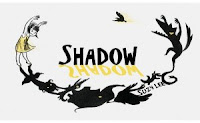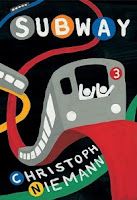Friday, November 26, 2010
Play on Words - literacy action game
By Nancy Miller
Here's a fun activity that can take five minutes, or roll out to 10 or 15.
The goal here is to have fun with words -- and encourage your kid to get reading!
Play on Words
This activity uses three major learning styles:
• visual: they see the words.
• aural: they hear the words.
• kinesthetic: they act out the words
Here's how to play:
1. Ask the child to say his name and what he likes to do. For instance:
“My name is Fraser. I like to swim." (or ride my bike, or run, etc.)
2. Write down the answer in large letters.
3. Then together, pretend you're swimming hard (lie across a chair and kick your feet while stroking with your arms; diving... make sure there's lots of action!)
3. Read the words aloud, pointing to each word. Read the words together.
You can also extend the learning:
*Do the actions again. Then ask your child to pick out the words that go with that action.
*Keep a record of the words.
*Later you can also cut out pictures to go with the activities; this is excellent for reinforcement.
Variations
Other times, pretend:
*Animals; "My name is Fraser. I am a lion."
*Vehicles: "My name is Fraser. I am a train."
*Sports: "I like to play baseball."
This will work with whatever your child's interests are.
This activity is a shortened version of a longer learning-to-read program. If you would like more information on the program, please contact: Nancy Miller at millerneighbour@rogers.com.
Monday, November 22, 2010
Save the Words
Won't you adopt a word?
You don't normally think of the Oxford English Dictionary people as silly, but they've developed a project that's pretty goofy, and it's something you can do with your kid to get her thinking about language.
They've rounded up hundreds of words that don't get used much any more. Words like gumfiate (to swell), lambition (licking) and vellicle (something that pinches or holds fast).
They've taken all of these nearly extinct words and knitted them into a virtual quilt, which you'll find here.
When you move your mouse over the words, they'll call out to you: "Pick me! Pick me!" They want you to adopt them.
You can find a word or two that you like and click on them. That will bring up its definition, and a form that allows you to "adopt" it. (Like all adoptions, you first have to register. Unlike human adoptions, it's free.)
Adopting a word means pledging that you'll try to bring it back into the mainstream. You'll use it in conversation and in writing, and you'll explain it to people.
Save a Word is meant to be a fun concept to get people thinking about words. It's a great resource to use to talk to your child about the fact that words evolve and how our language has changed.
You don't normally think of the Oxford English Dictionary people as silly, but they've developed a project that's pretty goofy, and it's something you can do with your kid to get her thinking about language.
They've rounded up hundreds of words that don't get used much any more. Words like gumfiate (to swell), lambition (licking) and vellicle (something that pinches or holds fast).
They've taken all of these nearly extinct words and knitted them into a virtual quilt, which you'll find here.
When you move your mouse over the words, they'll call out to you: "Pick me! Pick me!" They want you to adopt them.
You can find a word or two that you like and click on them. That will bring up its definition, and a form that allows you to "adopt" it. (Like all adoptions, you first have to register. Unlike human adoptions, it's free.)
Adopting a word means pledging that you'll try to bring it back into the mainstream. You'll use it in conversation and in writing, and you'll explain it to people.
Save a Word is meant to be a fun concept to get people thinking about words. It's a great resource to use to talk to your child about the fact that words evolve and how our language has changed.
Wednesday, November 17, 2010
NYTimes 10 best picture books
In time for holiday gift buying, three editors at the New York Times have published their choices for the "top 10" picture books of 2010.
I'm not sure I'm completely with them on this list. I mean, "top 10"? Out of everything, these are the ones? No Jeremy Tankard? So... as with any suggestions, take 'em with a grain of salt. But do check them out because no matter what, these books are no slouches.
The New York Times published excellent synopses for each book, here.
I'm not sure I'm completely with them on this list. I mean, "top 10"? Out of everything, these are the ones? No Jeremy Tankard? So... as with any suggestions, take 'em with a grain of salt. But do check them out because no matter what, these books are no slouches.
The New York Times published excellent synopses for each book, here.
Thursday, November 11, 2010
WORDS, an image-and-word poem
WORDS is a brilliant short (1:54) film that blends images to create a flowing "word poem" that is lovely, fun and thought-provoking.
It starts out with "play," which leads to "blow" and then "break" and "split" and then "run."
The images examine all aspects of the words. For instance, "run" is a person running, and then a runny nose, running a red light and running away... which leads to fly, and fly (zipper), and fly (work), and then fall... falling down, falling in love, waterfall, the Fall...
They used YouTube images to produce something really mesmerizing. Watch it with your kid, to bring new sense to some basic words and concepts and what they mean to us.
Re:WORDS from Everynone on Vimeo.
Thank you, Everynone, for this brilliant word poem. And BoingBoing for bringing it to our attention.
It starts out with "play," which leads to "blow" and then "break" and "split" and then "run."
The images examine all aspects of the words. For instance, "run" is a person running, and then a runny nose, running a red light and running away... which leads to fly, and fly (zipper), and fly (work), and then fall... falling down, falling in love, waterfall, the Fall...
They used YouTube images to produce something really mesmerizing. Watch it with your kid, to bring new sense to some basic words and concepts and what they mean to us.
Re:WORDS from Everynone on Vimeo.
Thank you, Everynone, for this brilliant word poem. And BoingBoing for bringing it to our attention.
Tuesday, November 9, 2010
How to build reading success
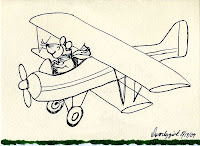 |
| Could this be Snappy the mouse? Well, no, I made him up. But if there was a mouse named Snappy, this would be him. In a bi-plane. Image: by Dvortygirl. |
When you’re reading with your child, point out a word or two and help him to memorize it. Every time the child reads that word—and can read that word—he’ll feel successful. And that’s when you praise the heck out of him.
Here’s how it would look
ME: This is a book about a mouse named Snappy. Look at that name, “Snappy.” See the big S at the front? It’s like a snake, isn’t it? How many letters does Snappy’s name have—let’s count them. Six! What else does Snappy’s name have?
KID: Two of these letters. (pointing).
ME: That’s right! Snappy’s name has two ps! And do you know this letter? (Pointing to the y.)
OK, so now the child will recognize that if there’s a word with two ps and a capital S and a y, it’s likely to be “Snappy.”
You’ve shifted his focus from all of the grey text in the book, to looking for just one little word. And you’ve chosen a word that will come up a lot in the book, so there will be lots of successes.
And now as you’re reading out loud, pause whenever the word “Snappy” is in the text. And you know who’s going to read that word? (Right!) The kid.
The first couple of times you’ll pause and point to the word, and maybe point out the capital S and the ps with your finger. And then look pointedly at the child, as if waiting… for… him… to… say…
KID: Snappy!
ME: Good one! That’s right! There’s that word: Snappy! Nice job. I wonder if it’s in here again…
And sure enough, the second time you pause, he’ll notice the capital S and call out, “Snappy!” And you’ll both be delighted. And the next time it will happen faster, and the next time you won’t even have to pause at all.
It will become seamless, like this:
ME: One day when (child: Snappy!) was in his bedroom, his mother called to him. (child: Snappy!) she called. Oh, (child: Snappy!). Come down and eat your dinner!
And then later in the week, the child will see the word in some other context, in another book or in an ad (Snapple) and he’ll be so proud that he knows that word.
Is he sounding out the word using phonics? No, he’s memorizing it by its shape and a couple of cues. And memorizing is an important part of learning to read, especially in the beginning.
But more than that, your child has taken ownership of a word. He’s taken ownership of a book with “his” word in it. He has learned that he can read something, and he’s been successful.
Sunday, November 7, 2010
Parents can teach media literacy
 |
| The North American House Hippo exists... right? |
The world for kids today is increasingly packed with messages from the media that are contradictory, confusing and overwhelming.
(By media, I mean primarily advertisers, news organizations and the Internet.)
Media literacy—being able to make sense of what advertisers and news organizations are telling us—has been moved up on the curriculum in many school boards, including the massive Toronto District School Board (TDSB).
Parents should also move it up on their “curriculum.” There’s a lot you can do to give your kid a basic foundation in media literacy that will help prepare him to navigate a world full of ad messages, hidden agendas and conflicting ideas.
When you’re walking down the street, point out some ads and talk about them:
For younger kids—Talk about the actual words and pictures on the ad. Ask basic questions like, “why is there a picture of a hamburger on that poster?” “What is being sold?” “How much are they selling it for?”
For older kids—“Who do you think they’re targetting with that ad?” “How much do you think the company spent on that ad? Why?”
Open up a newspaper with your child:
For younger kids—Show them that there are different sections to a newspaper. Explain what a headline is for. Talk about some of the pictures. (Note: It’s tempting to turn to the comics page, but ironically most comics will be too obscure for young kids, so you’re probably better off with Sports or Lifestyle.)
For older kids—Focus on a specific story. Pick one from a section that interests them; perhaps Sports or Fashion. But don’t shy away from current events or politics, either. If there’s an election in your area, explaining what an election is, and who’s up for election can be one of the most engaging conversations you have with your child.
When you’re watching TV, talk to your kids about the program they’re watching. Talk to them about actors and make-believe. Take them mentally out of the program and “behind the camera,” where the show is actually created.
Here’s a great place to start: the North American House Hippo
It’s a one-minute TV “commercial” created by a non-profit group, Concerned Children’s Advertisers. It advertises “the North American House Hippo,” a supposed nocturnal, rodent-like creature.
The message at the end of the ad is that of course there’s no such animal, but didn’t the ad make you feel as if the hippo really existed?
Thursday, November 4, 2010
Superhero School
Kids love superheroes. But...
...superheroes are usually found in comics. And parents want kids to read books. Plus, superhero comics are often too violent for younger children.
Solution: books with superheroes.
Superhero School, by Aaron Reynolds, is just such a book, and it's terrific.
Protagonist Leonard is a kid with super-strength and super-speed. When he gets sent to superhero school, he can't wait. He looks forward to learning how to stop trains, and bend iron and clobber bad guys.
So he's more than a little disappointed when the teacher at superhero school teaches them boring stuff like fractions, and division instead of flying and clobbering.
But when the ice zombies kidnap the teachers and threaten to take over the world, Leonard and his classmates sure are glad they have the math skills they'll need to divide and conquer!
A terrific book, with a nice twist that kids might not see coming.
The illustrations are quirky-great; there's only one illustration of clobbering and it's just silly rather than violent.
Other great superhero books we've reviewed:
So your kid loves superheroes? No problem.
More superheroes.
...superheroes are usually found in comics. And parents want kids to read books. Plus, superhero comics are often too violent for younger children.
Solution: books with superheroes.
Superhero School, by Aaron Reynolds, is just such a book, and it's terrific.
Protagonist Leonard is a kid with super-strength and super-speed. When he gets sent to superhero school, he can't wait. He looks forward to learning how to stop trains, and bend iron and clobber bad guys.
So he's more than a little disappointed when the teacher at superhero school teaches them boring stuff like fractions, and division instead of flying and clobbering.
But when the ice zombies kidnap the teachers and threaten to take over the world, Leonard and his classmates sure are glad they have the math skills they'll need to divide and conquer!
A terrific book, with a nice twist that kids might not see coming.
The illustrations are quirky-great; there's only one illustration of clobbering and it's just silly rather than violent.
Other great superhero books we've reviewed:
So your kid loves superheroes? No problem.
More superheroes.
Monday, November 1, 2010
Promote literacy: four important activities
There’s a fourth promoter of literacy.
You know that I’m always going on about the three most important things you can do to turn your kid into a great reader:
1) Read to her every day.
2) Have lots of books scattered throughout your house.
3) Let her see you reading.
Research tells us that if you do those three things, you’re more likely to have a kid who loves to read.
A Grade 1 - 2 teacher at my son’s school told me about another one: The number of books she reads/looks at/has read to her.
Mr. Remisch told me that kids who “go through” books at a fairly good clip tend to be lifelong readers. It makes sense; it’s kind of an extension of #2—exposing her to books, having them around her.
Mr. Remisch has a wonderful plan to get the kids in his class to “get through” a lot of books. He uses an incentive.
The kids in his class will write down the title of every book they read, along with as much as they can or want to say about the book. When they get to 30, they’ll get a certificate.
For a six-year-old, that’s a pretty solid incentive. In fact, just keeping track—or having your teacher keep track—of the books you’re reading is enough to keep a kid reading.
In this exercise, Mr. Remisch isn't concerned as much about the quality of the reading material, as the quantity. He’s not trying to make kids read specific things, here; he’s trying to expose them to books. Lots of books.
He’s setting the stage for later years, when the quality of the reading material will become more important.
He doesn’t want kids going home and staying up until two in the morning, reading all 30 books in one week, so he’ll probably set a limit of three books a day.
And he says it is important that the child understand what she’s reading, so there will be some discussions about the books. And for every, say, dozen or so books, he’ll ask the child for a bit more detail.
A reading incentive chart with a nice reward is a great way to expose your child to books and get her reading.
Here’s an earlier article we wrote on Reading Reward Charts.
You know that I’m always going on about the three most important things you can do to turn your kid into a great reader:
1) Read to her every day.
2) Have lots of books scattered throughout your house.
3) Let her see you reading.
Research tells us that if you do those three things, you’re more likely to have a kid who loves to read.
A Grade 1 - 2 teacher at my son’s school told me about another one: The number of books she reads/looks at/has read to her.
Mr. Remisch told me that kids who “go through” books at a fairly good clip tend to be lifelong readers. It makes sense; it’s kind of an extension of #2—exposing her to books, having them around her.
Mr. Remisch has a wonderful plan to get the kids in his class to “get through” a lot of books. He uses an incentive.
The kids in his class will write down the title of every book they read, along with as much as they can or want to say about the book. When they get to 30, they’ll get a certificate.
For a six-year-old, that’s a pretty solid incentive. In fact, just keeping track—or having your teacher keep track—of the books you’re reading is enough to keep a kid reading.
In this exercise, Mr. Remisch isn't concerned as much about the quality of the reading material, as the quantity. He’s not trying to make kids read specific things, here; he’s trying to expose them to books. Lots of books.
He’s setting the stage for later years, when the quality of the reading material will become more important.
He doesn’t want kids going home and staying up until two in the morning, reading all 30 books in one week, so he’ll probably set a limit of three books a day.
And he says it is important that the child understand what she’s reading, so there will be some discussions about the books. And for every, say, dozen or so books, he’ll ask the child for a bit more detail.
A reading incentive chart with a nice reward is a great way to expose your child to books and get her reading.
Here’s an earlier article we wrote on Reading Reward Charts.
Subscribe to:
Posts (Atom)

